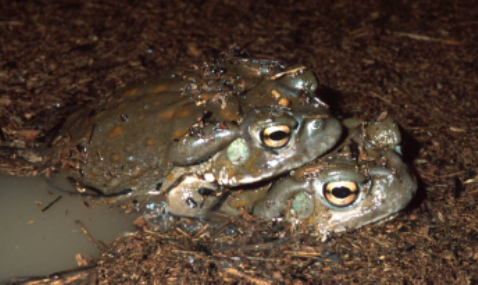 |
 | |
  | |
|
|
|
|
Saguaro National Park
Amphibians
|
|
|
|
|
| |
 |
 |
| Saguaro National Park | | The Sonoran Desert Toad is also known as the Colorado River Toad. |
 |
Throughout their life cycle, amphibians live on both land and water. Young are usually born in water and spend the early part of their life cycle there. As they grow, their bodies change through a process called metamorphosis. Gills necessary for breathing in water transform into air-breathing lungs, and young amphibians lose their aquatic tail in favor of strong legs for swimming and jumping. Now these juveniles are ready to live on the land!
The Sonoran Desert is dry and very hot – not a place where one might expect wet-skinned amphibians! Torrents of summer monsoon rain summon toads from their underground burrows where they spend most of the year. On July nights, hundreds of toads can be found breeding in temporary pools. Saguaro National Park amphibians include Couch's spadefoot, leopard frogs, and the canyon treefrogs which live year-round in small water sources such as rock pools and springs.
|
|
|
|
|
|
|
|
|
|
|
 |
|
Did You Know?
The saguaro blossom is the state flower of Arizona. In late summer, the Tohono O’odham people come to Saguaro National Park to harvest the saguaro fruit.
|
|
|
|
Last Updated: September 15, 2008 at 14:54 EST |






